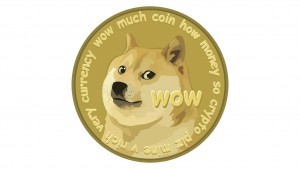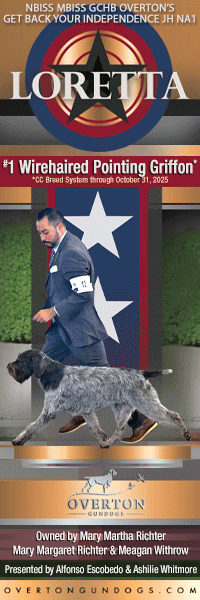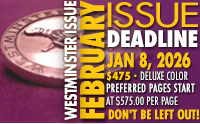The Dog Behind the Dogecoin
By Amy Fernandez
 Crypto currency has made news and rattled investors for well over a decade. Bitcoin was followed by a slew of others that have since imploded along with millions in investments. But one crypto of stood out-for reasons that need no explaining here. Created by a couple of software developers, Dogecoin gained traction thanks to the irresistible Shiba Inu image that became its trademark or meme. Ok, it offered a few tweaks on the Bitcoin concept but that wasn’t the selling point. The Dogecoin became famous thanks to Kabosu, the dog behind the coin. After a decade of fame, Kabosu, at age 18, succumbed to her long battle with leukemia on May 23.
Crypto currency has made news and rattled investors for well over a decade. Bitcoin was followed by a slew of others that have since imploded along with millions in investments. But one crypto of stood out-for reasons that need no explaining here. Created by a couple of software developers, Dogecoin gained traction thanks to the irresistible Shiba Inu image that became its trademark or meme. Ok, it offered a few tweaks on the Bitcoin concept but that wasn’t the selling point. The Dogecoin became famous thanks to Kabosu, the dog behind the coin. After a decade of fame, Kabosu, at age 18, succumbed to her long battle with leukemia on May 23.
Her stardom seemed unlikely. In 2008 she was surrendered to a shelter where she was luckily adopted by Atsuko Sato, a kindergarten teacher in Sakura, Japan. Like most new owners, Sato immediately began posting pictures of Kabosu on social media. Within a few months, Kabosu had attracted legions of fans, thanks to the combination of her natural charm and Sato’s hilariously quirky captions like “Much Wow”. This, in turn, inspired the legendary doge meme that became the face of dogecoin in 2013. Ironically the entire package was originally created to mock the Bitcoin craze then in full swing.
You could also argue that the breed is simply so sharply photogenic that it was predestined for social media celebrity. Maybe it was the investment opportunity or maybe it was Kabosu, but people could not wait to invest in dogecoins, and a decade later, against all odds, it is still around. In a way, it mirrors the Shiba Inu’s history. Currently the most popular pet breed in its home country, it has had more than one brush with extinction.
Bred for centuries in the Chugoku and Chuba regions of Japan, function and locality shaped the breed’s evolution. Spirited, hardy and agile, the Shiba was ideal for hunting small game in dense mountain forests. It was the Japanese version of the hardy Terriers of Britain and the Pinschers of Germany. That was the Shiba’s history for centuries.
From the nineteenth century onwards, the Shiba-along with other native Japanese breeds, were increasingly mixed with Western breeds and interbred with other indigenous breeds. For instance, despite obvious differences in type, the Kishu Inu and the Kai Inu crossbred so frequently during that time that they nearly disappeared. By the start of the twentieth century, all these breeds were at serious risk of complete extinction.
The Society for the Preservation of the Japanese Dog (Nippon Inu Hozonkai) was founded in 1928 as part of a government effort to preserve indigenous culture. As part of that, the Shiba Inu was designated as a national treasure in 1936. By then, almost no purebred Shiba strains remained, which was comparable to the situation in Russia when Joseph Thomas began his quest for genuine Borzoi stock in the early twentieth century.
Although a breed standard was created in 1934 and breeding programs founded on the remaining remnants of the breed everything was again derailed by the devastation of WWII. By the early 1950s only three pure bloodlines remained, the Shinshu, the Mino, and the San’in. These had been crafted in different regions, selectively bred for the specific demands of local game and terrain. Needless to say, each one had its unique defining traits. Ultimately, they were combined in a last ditch effort to revive the breed which became collectively known as the Shiba Inu. This explained the variations in type that continued to show up in the breed many generations later.
A few dogs had been imported to America earlier in the twentieth century, but the breed really didn’t develop a loyal following until the 1950s when American servicemen stationed in Japan began returning with Shibas. By the 70s, fanciers had organized and the breed became a dominating presence at rare breed shows throughout the 1980s. At the time, it was often described as a miniature Anita-which it definitely is not. However, it is one of those breeds that inspire a lifetime of devotion.
The national club was founded in 1992 and a year later the breed graduated from Miscellaneous Class to Non-Sporting. Unlike the Dogecoin, the Shiba Inu has proven to be a sturdy, reliable investment for AKC. By far the most popular pet breed in its home country, it currently ranks 46th here (It’s certainly a local favorite in Queens). Playful, low maintenance and packed with visual appeal, the ancient Shiba is the ideal breed for our times.
As a tribute to her impact on crypto culture, a crowd funded statue of Kabosu was unveiled at a local park in Sakura last November.
Short URL: https://caninechronicle.com/?p=298008
Comments are closed












